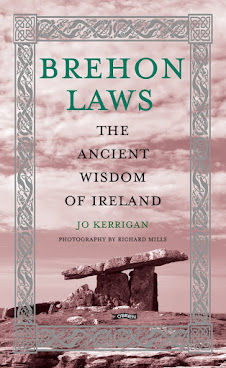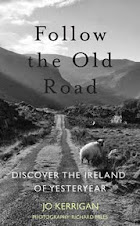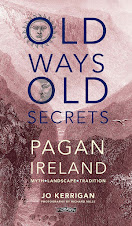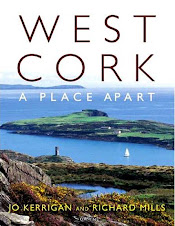I know you all want to hear who's won the Connemara Twilight shawl kit so let's not delay but sort that out. And gosh, it isn't easy! What lovely heartfelt observations and such unerring instinct for knowing what is really valuable in life. I wish I could post shawl kits to every single one of you, but that would reduce me to beggary and I'd have to come live with all of you in turn, which might not be exactly to your liking.
I've narrowed it down to three:
Lilacs4Angels, you wrote:
Like I said, you all deserve prizes for the way you wrote about what the world of blogging and the worldwide web have meant to you. But these three captured the essence most vividly, I think. So what the heck, the three of you get prizes! PM me if you're on Ravelry, email me if you're not. There is a link on this page for both.
I'd like to add this final point. We really are a huge force for good power in the world, we bloggers. We have the ability to influence decisions and make changes that need to be made. Don't neglect your power. If we believe we can, then we will move mountains.
And speaking of mountains, let's get back to where we left that road trip in northern Ireland, shall we? I think we left the rattly little green bus by Dunluce Castle, so climb on board and we'll clank off around by Malin Head, the northernmost point on this green isle, and cross Lough Swilly by a lovely little ferry into County Donegal.

See this huge stone circular wall looming on top of the hill? That's Grianan an Aileach, an ancient royal fort of the O'Neills, glowering down over the valleys and loughs, daring any invader to come close enough for a fight.

And here is a clever fish-eye shot of the interior (don't know how he does that). In ancient times, of course, that nice clean grass sward would have been jammed with little huts and bothies and fires and equipment, but it's still pretty evocative as it is, with the wind whistling over the ramparts and only the lone cry of a curlew to break the peace.
Now this signpost excited me very much.

Look at that name. (On some nearby signposts it was spelt Beltany, but that was fine - spelling didn't get standardised until very recently - late 19th century in some places, and when you have both Irish and English versions of place names as you do here, it's anybody's guess.) If ever I saw a clear surviving link to the ancient rituals of Beltane or Bealtaine, May Day, that's it. And it's the first such example I've seen. Most stone circles are named for the present townland where they stand. This is a rare exception. Naturally we hurled ourselves out of the car and climbed a steep lane. We were breathless by the time we got to the top and found an old gateway .

Right at the top of a lonely hill stood this massive stone circle, absolutely radiating power and the memory of ancient rituals performed here millennia ago.

'Was that one left out?' DH wondered, as we went to inspect this tall stone standing some distance from the others. Somehow I don't think so. It's at times like this you get really frustrated at not being able to put yourself back in time, to see exactly what the rituals were, and how the single great stone played its part in relation to the circle.

What do you think of this? A big mound of stones behind a house, right? Well, not quite. That untidy pile is in fact The Heapstone, the largest ancient cairn in Ireland outside the Boyne Valley. It might look recent, but believe me, it isn't. I put in this picture so you could see how close the past and present mingle in rural Ireland. Kind of nice, isn't it? But there's more. There's always more! A simply lovely traditional legend in this case. That huge cairn, you see, hides a very ancient sacred well of healing, used by the Tuatha de Danaan to cure their battle wounds. But their enemies cunningly came by night, every soldier carrying a stone, and they filled in the well and piled the stones high over it, so that next day, after a fierce conflict, the Tuatha de Danaan could not reach the healing waters, and so passed from the living world to the green hills forever.

It's worth another picture, isn't it, now that you know the full story? Wouldn't you love to dig to see if the well is still there? Because of course it must be! It has to be! Maybe if we went water divining...?

Here is a massive dolmen at Bloody Foreland. As you can see, the weather was turning slightly damp, but that, if anything, emphasised the dramatic size of this great monument to ancient hard work. Can you imagine how much effort it must have taken to raise that gigantic capstone?
Damp weather or no, Donegal was simply beautiful and I didn't want to leave. It has been such an isolated region for so long, that old traditions and customs have lingered there, untouched by modern ideas, and there is so much more to find out, to learn. Plus I didn't even get to Kilcarra, to see if there is a back door with a bin of discontinued or discarded yarns! Next time, next time... We had perforce to continue down the deeply indented west coast and into Sligo, the country of Yeats.

This dolmen was at Carrowmore, probably the largest collection of megalithic monuments outside Carnac in Brittany. But do you see that hill rising behind the dolmen, with the mound on top? No, maybe you can't see the mound at that distance. Wait a minute.

There, can you see it now? That is Knocknarea, the fabled tomb of Queen Maeve, who was herself of course a reincarnation of one of the ancient goddesses who ruled Ireland before a more patriarchal religion took over. There she lies, sword probably ready to hand if I know her, waiting for the moment when her country demands her to fight once more. Remember Yeats' poem?
The wind has bundled up the clouds high over Knocknarea
And thrown the thunder on the stones for all that Maeve can say...
Now here is somewhere completely different, the total antithesis to powerful goddesses and the old ways:

It's no good. I can't be professionally objective about this place. To put it mildly, it gives me the screaming ab-dabs. That looming, threatening bastion out there in the lake - it puts me in mind of a prison. Which it is in one way. Once you're out on that island, there is no escape until the little ferry boat chooses to take you. And yet, for many it is a place of refuge, of therapy, of peace. It's Lough Derg, of course, St. Patrick's Purgatory, where not so very long ago the faithful would starve themselves for days and nights while making the rounds of the various praying points, often on their knees. Perhaps they still do, even in this rather more self-indulgent age. I can't be objective because my own mother went there many years ago, on more than one occasion, and I remember the condition she was in when she came back. Small as I was, I hated Lough Derg with an intensity that has not, apparently, faded.
But the historian in me is interested, because like so many other pilgrimage sites in Ireland, Lough Derg is really a far older place of worship. Underneath that vast church you see on the right of the picture there are deep caves. Caves that have been officially closed and unreachable since the early 1700s when the then Pope ordered their effacement from general knowledge. In ancient times, this island was where the wise men, the druids, would come in search of enlightenment and knowledge. They would stay in the depths of these caves for several days and nights, starving themselves until they saw visions and made contact with the Otherworld. Shamans in North America would do the same thing. It became the practice in later centuries for others in search of knowledge and answers to come to the caves too, and endure the same rigorous conditions. However, the Christian church disapproved of self-education of this kind, and closed off the caves forever. It is very significant, though, that people are still drawn to that island, still stay there to fast and pray. They're following the old ways, even if they don't realise it
Onward, onward. We've miles to go yet

An hour's drive, and we're at another site of pilgrimage, the great Croagh Patrick in Mayo, where at Lammas-tide, the beginning of August, thousands climb the mountain, some in bare feet.

Even when we were there, well before Lammas, there were enthusiastic climbers making their way up the long rocky path, trodden by centuries of believers. Millennia actually, because excavations on the top have shown beyond doubt that Croagh Patrick was used for ritual celebrations from ancient times. It's rather reassuring to see the old ways still holding firm, albeit under a different name, isn't it?
The evening was drawing on as we came down into Connemara.

It would have been lovely to stay until the evening darkened into twilight and the mountains became blue and purple, but it was still a long way home. Had to make do with creating those Connemara Twilight shawl kits instead when I was safely back among the stash.
But we did stop to take this picture for you, especially for those who count The Quiet Man among their favourite movies.

Yes, this is the very bridge where John Wayne stood, and in flashback remembered his mother talking of the old days and the cottage where he had been born. Thought you'd like it.





















